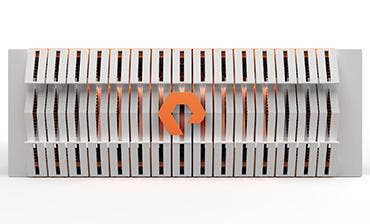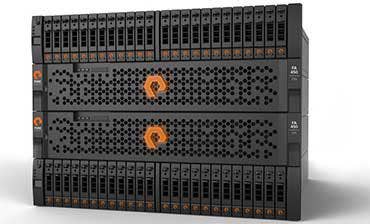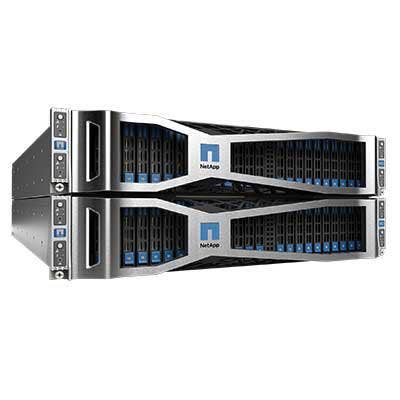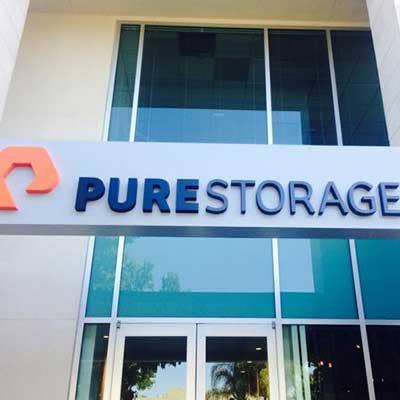CRN Exclusive: New Pure Storage CEO On Potential Hyper-Converged Infrastructure Plans, Competing With NetApp, And Choosing A Snappy Nickname

Focus On All-Flash Storage Paying Off For Pure Storage
While Charlie Giancarlo has been CEO of Pure Storage for about three months, since Chairman and former CEO Scott "Dietz" Dietzen gave up that role, he has yet to get the one-syllable nickname that nearly every Pure Storage employee receives.
But that may be the only thing that has not worked for him in his new role. Pure Storage, which went public two years ago but which has yet to show a profit, late last month said it was cash-flow-positive for the first time and will soon be profitable. The company is in the top five list of flash storage vendors and is one of the fastest-growing storage vendors overall. And it is exploring new avenues of growth for its flash storage business including possibly doing more in hyper-converged infrastructure and compute environments.
Giancarlo recently spoke with CRN to talk about the future direction of the company. Here’s what he had to say.

CRN: Have you come up with your one-syllable nickname yet?
Giancarlo: Apparently, 'Charlie.' We challenged the entire company, and as creative as the team is, they couldn't beat the 60 years of 'Charlie' being my nickname. I'm open to it. And, by the way, the contest is still open if you want to put in a suggestion.
CRN: I'm surprised you don't use 'Chuck,' unless somebody else is using it ...
Giancarlo: In one sports team I was in in college they used that. But it never stuck.
CRN: What is Dietz's (pictured) role now?
Giancarlo: Dietz is chairman. You might also call him 'ambassador.' He's been on the road, meeting with customers and partners, and also been working with us to some extent in terms of strategy. He's been a great confidant for me as I'm making my way in the early days of a new environment. He's been quite busy, actually.

Pure Storage is pretty much focused on all-flash storage. Isn't that a risky strategy for a company looking to really grow and become a major part of the data center infrastructure?
Giancarlo: I'd phrase it in a different way. First of all, if you believe that not just first-tier but tier-two storage is also going to go to flash, it's not really very narrowing. But if what you're really asking is, is storage too narrow a category, I do believe that we will expand beyond what is just standard storage as environments [become] much more integrated. Whether it's converged infrastructure, or hyper-converged infrastructure, or super-converged infrastructure, or whatever version of converged infrastructure you want to identify, we need to become, and we will become, a bigger and bigger part of that.
But I don't think flash by itself narrows our opportunity. Indeed, I believe that flash is going to continue to come down in price and start to take on more and more workloads that were previously just magnetic [disk-based].
Pure Storage is already in converged infrastructure in partnership with Cisco with FlashStack.
I just believe that customers want more and more simplicity in terms of the way they deploy their compute environments. And so, I'm not announcing anything, but the fact of the matter is that Pure today is, as I've said before, we require five to 10 times fewer bodies to manage our product. Well, extending that simplicity into the networking and compute and integrating more is an obvious future direction for us.

Does that mean someday maybe bringing compute functionality to Pure Storage's flash storage arrays?
You know, we already allow customers and third parties to put containers in our storage arrays to be able to provide some additional compute or management of the data that's in there. As I said, I really don't want to start predicting or announcing things that will be coming out in the future. But you can assume that, in terms of certainly higher levels of integration of management and orchestration of storage with other systems, that is, networking and compute, yes, we will be doing more of that.

One of your competitors, NetApp, just released its hyper-converged infrastructure appliance based on its SolidFire all-flash storage technology. Do you think that was the right move for NetApp, a storage vendor, to get into hyper-converged infrastructure?
I think that that move is emblematic of what's happening in the storage and compute industry, which is that it's become a much more dynamic environment than it was just a few years ago. And I believe that it has opened up opportunities for vendors that were uniquely supplying just one component in an overall compute stack [to now] operate in other environments as well. Only time will tell whether that was the right thing for them to do, and whether or not they will be able to fully execute on that model. But I do think that what it identifies is that the marketplace is open now to new solutions from new vendors. And that's good for us. And it's good for companies that can be aggressive and innovative in their R&D, and aggressive in terms of the new architectures that they put in place.

How much of a risk to Pure Storage's business is the cloud? IDC says the top storage vendors are losing market share to hyper-scalers.
I actually see cloud as an opportunity. About 25 percent of our business is in cloud today. As you'll note, we haven't made announcements yet with hyper-scalers, but certainly those discussions are taking place. And we believe we just have a superior offering. And our superior offering is not specifically our hardware. It's the software that we use to manage the environment and increase the feature sets that we create. And we think that allows us to be a better supplier, both into SaaS companies as well as the social hyper-scalers.
[The cloud] may shift the overall amount of data that's kept on-prem versus the amount of data that's kept in the cloud. But I don't see it as a threat. I see it as an opportunity.

Do you see Pure Storage ever developing virtual appliances that might run on the cloud in lieu of hardware appliances on-premises?
I think that is certainly one of the opportunities in front of us. I do.

CRN: Looking at the third fiscal quarter financials, Pure Storage is still recording a loss. When do you expect to show a quarterly profit?
Giancarlo: We were cash-flow-positive on the quarter for Q3 ...
CRN: Is that the first time?
Giancarlo: That was the first time we were cash-flow-positive. The loss was only 0.7 percent, so less than 1 percent loss. Within spitting distance, if you will, of profitability. And we announced that Q4 will be profitable. ... The forecast was for Q4 profitability.

CRN: Where did the growth in sales mainly come from?
Giancarlo: It was across the board. We continue to have very fast growth in FlashBlade. But FlashArray, frankly, continues to accelerate, or re-accelerate. So it was really across the board. And it was in all segments. I would say that Europe was especially strong for us. International in general was especially strong for us. So we were glad to see that because international last quarter was 31 percent of total sales. And in a mature company, the long-term target will be more like 45 percent. So we continue to march up in terms of international sales.
CRN: Did U.S. sales grow?
Giancarlo: As I said, we grew sales across the board. International just a bit faster than U.S. Just to re-emphasize, it's 41 percent growth year-over-year for the company.

Pure Storage has typically had a channel-only sales model. Is that still the case?
That is still the case. Outside of service providers and managed service providers. But yes, in the enterprise market, midmarket, etc., it's 100 percent channel. And that continues to be the case. And if you know my background, you know that that's my belief system.

Since you took over the CEO role at Pure Storage, have you had a chance to get out and talk with channel partners much?
I have, actually, quite a few. I've probably met with on the order of 30-plus channel partners in my first quarter [as CEO]. We have some really strong and great channel partners, you know, SHI, Insight, WWT, ePlus, Presidio. They're very excited about Pure, very excited about the programs we're putting in front of them. But also very excited about the traction they're getting in the market with our product.

What's the competitive environment you're working in? How's that changing?
Every deal is tough, of course. But we're definitely seeing a change in the customers who are tired of being held captive, and tired of the amount of work it takes to be able to manage storage arrays. So, with us, they get an evergreen model which means that it continues to be upgraded over time so that they won't need to migrate their data on the next generation [of array] or acquisition of new technology by one of their existing suppliers. They like the fact that it takes literally five to 10 times fewer people to manage the same amount of storage with us. And they just like the model where we continue to upgrade the system on an ongoing basis as part of our subscription evergreen model.

CRN: How about the channel?
Giancarlo: The channel, which is also a big part of this, likes the fact that (a) we're 100 percent channel, and (b) we're not competing with them in the same set of customers. And we're starting to see channels come around because of the changes by some of our competitors that have become less channel-friendly.
CRN: Can you give me an example?
Giancarlo: Certainly the big SAN vendors have been squeezing their expense stack, reducing the amount of spending both on R&D and in sales and marketing. And what that generally means is that they've taken more business direct in order for them to not have to discount for the channel.
CRN: How about a specific example?
Giancarlo: You know, I don't like to identify them directly. But pick the number one, two, and three storage vendors out there, and you've got the list.

You mentioned that customers don't want to be captive. But if someone adopts Pure Storage as a part of their infrastructure, don't they automatically become captive to Pure Storage?
You know, that's not something we attempt to do. … If they like the product I suppose that's the case. But we don't attempt to hold customers captive based on maintenance pricing or bundling. If they're captive, it's because they like our product.